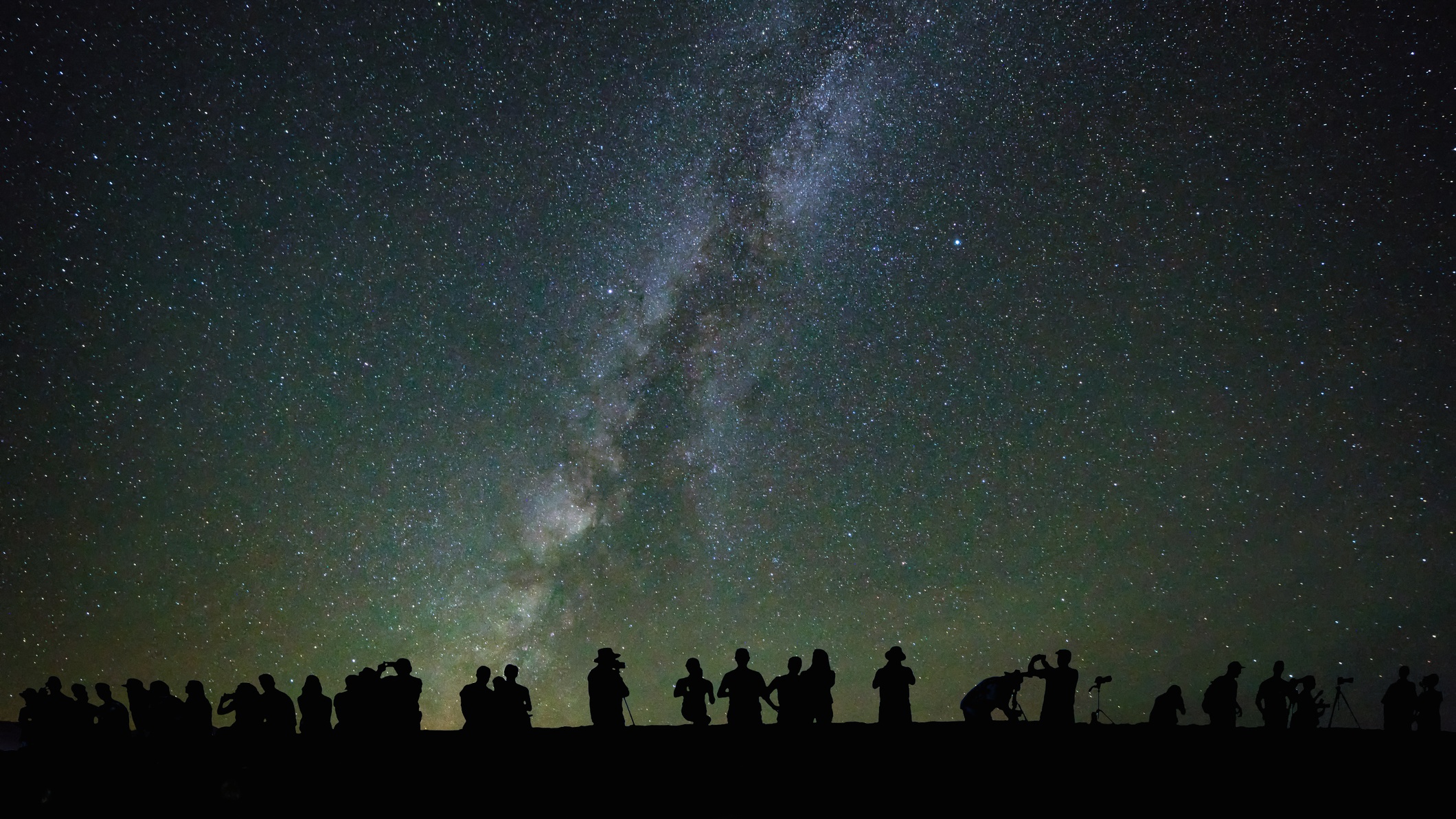The 'Super Bowl of Astronomy' begins next week in New Orleans
Thousands of scientists will gather at the 243rd meeting of the AAS to discuss the weirdest, coolest and most exhilarating discoveries they've made over the past year.

The world of astronomy has already offered a pretty fascinating start to 2024. In just the first five days of the year, we've seen incredible discoveries like the true colors of Neptune and Uranus as well as a massive cyclone raging on a distant exoplanet thanks to the trusty Hubble Space Telescope. But things are only going to ramp up over the next week. By a lot.
From Jan. 7 to Jan. 11, the 243rd meeting of the American Astronomical Society will convene in the vibrant city of New Orleans, Louisiana.
Thousands of scientists specializing in an absolutely incredible array of subjects ranging from dark matter mysteries to star explosions and the search for habitable exoplanets to the technology required to propel spacecraft across the solar system will gather in one area. They'll get ready to announce some of the best and brightest studies they've been working on; meanwhile, they'll be figuring out how to get even bigger and brighter with their next by listening to wild ideas, strange contradictions and telescopic achievements their colleagues will lay out. Some have even called this event the "Super Bowl of Astronomy."
Related: The Magellanic Clouds must be renamed, astronomers say
NASA will be there too, to offer updates on major missions like the trailblazing, $10 billion James Webb Space Telescope and the upcoming, highly anticipated, Habitable Worlds Observatory. According to a statement released on Jan. 5, NASA will also be discussing the 2024 total solar eclipse, which will take place on April 8, the Transiting Exoplanet Survey Satellite (TESS), the Nancy Grace Roman Telescope currently under construction and even its scientific balloon program.
"Experts will discuss new research from NASA missions at the 243rd meeting of the American Astronomical Society (AAS) on topics ranging from planets outside our solar system to fleeting, high-energy explosions in the universe," the agency said in the statement.
All NASA press conferences will be streamed for the public to view on AAS's Press Office YouTube channel; other conferences during the meeting will be found there as well. After the meeting concludes, the streams will be available to view on an online archive provided by the organization. You'll notice that this archive includes a wealth of presentations from previous years as well.
Get the Space.com Newsletter
Breaking space news, the latest updates on rocket launches, skywatching events and more!
Beyond NASA, teams from other iconic space facilities, current and upcoming, are scheduled to speak, too. Members of the Rubin Observatory, for instance, are expected to let everyone know how things are going with their efforts to discover tens of billions of galaxies once its construction is complete in Chile. But, as we'd mentioned, perhaps the most interesting and hopefully mind-blowing presentations will be coming from researchers speaking during the event.
Though we don't have a ton of information yet on each of those talks, we're able to see some of the study headlines. And they look quite intriguing. For instance, Jan. 8 is poised to bring us an update on a "dark galaxy," the origins of "odd radio circles," and a "famous exploded star in its best light." Jan. 9 appears to have information concerning an exoplanet's tail-like escaping atmosphere and a highly distant fast radio burst seen by the Hubble Space Telescope. Jan. 10 has something about a "supernova imposter" on its schedule and Jan. 11 beholds an entire category of presentation dubbed "Oddities in the Sky." This honestly barely scratches the surface. You can have a look at the full list of presentations here.
Briefings are scheduled to begin between (and including) Jan. 8 to Jan. 11 at 10:15 a.m. CST (11:15 a.m. EST) and then again at 2:15 p.m. CST (3:15 p.m. EST). During the week, you can follow along with Space.com as we bring you some of the AAS's 243rd meeting highlights.
Join our Space Forums to keep talking space on the latest missions, night sky and more! And if you have a news tip, correction or comment, let us know at: community@space.com.

Monisha Ravisetti is Space.com's Astronomy Editor. She covers black holes, star explosions, gravitational waves, exoplanet discoveries and other enigmas hidden across the fabric of space and time. Previously, she was a science writer at CNET, and before that, reported for The Academic Times. Prior to becoming a writer, she was an immunology researcher at Weill Cornell Medical Center in New York. She graduated from New York University in 2018 with a B.A. in philosophy, physics and chemistry. She spends too much time playing online chess. Her favorite planet is Earth.









